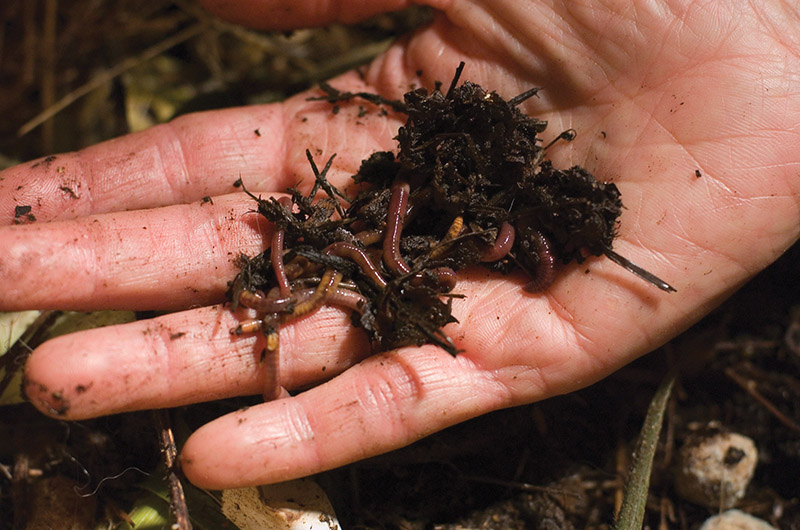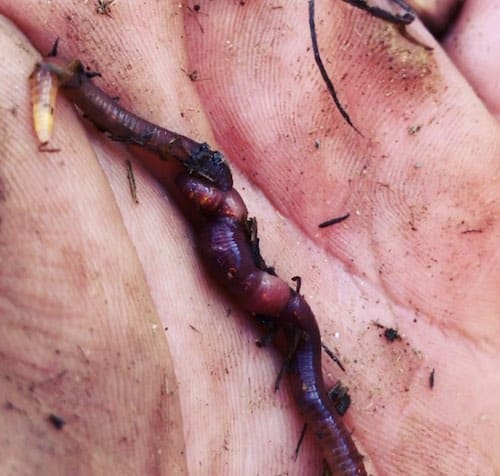Red Wiggler Worms - Reliable Decomposers for Your Compost Bin
Wiki Article
Red Wiggler Worms Demystified: Opening the Tricks of Vermiculture for Greener Living and Nutrient-Rich Dirt
In the world of sustainable practices for enriching dirt top quality and promoting eco-conscious living, red wiggler worms play a pivotal yet commonly neglected role. These humble creatures have the amazing ability to transform natural waste right into nutrient-rich castings that act as a potent natural fertilizer. By delving right into the world of vermiculture, one can reveal a plethora of advantages that expand much beyond typical composting methods. Comprehending the details of caring for these worms, maximizing their atmosphere, and harnessing their castings can bring about a greener lifestyle and much healthier soil for plants to thrive.The Duty of Red Wiggler Worms
Red Wiggler worms play an essential function in composting systems by successfully breaking down organic issue right into nutrient-rich spreadings. These ravenous eaters eat a variety of organic materials, such as kitchen area scraps, lawn waste, and paper items. As they feed, the worms' gastrointestinal procedures damage down the natural issue into a penalty, dark, and nutrient-dense material referred to as worm spreadings or vermicompost.The spreadings created by Red Wiggler worms are extremely beneficial for dirt wellness and plant growth. They are rich in essential nutrients like potassium, nitrogen, and phosphorus, which are crucial for sustaining healthy and balanced plant growth. In addition, worm spreadings consist of beneficial germs and enzymes that aid enhance soil framework, increase water retention, and enhance nutrient uptake by plants.
Benefits of Vermicomposting

Furthermore, vermicompost, the nutrient-rich final result of vermicomposting, functions as an exceptional natural plant food and soil conditioner. It improves soil structure, enhances soil oygenation, and enhances soil moisture retention. These residential properties add to healthier plants with more powerful origin systems and better resistance to bugs and illness. Vermicompost additionally enhances the soil with essential nutrients like phosphorus, potassium, and nitrogen, promoting plant development and overall soil fertility.
Additionally, vermicomposting supports lasting gardening practices by providing a chemical-free and natural option to synthetic plant foods. Red Wiggler Worms. This eco-friendly method not only enriches the soil yet additionally aids minimize dependence on dangerous chemicals, promoting a greener and extra lasting method of horticulture
Establishing Up a Worm Container
When establishing a worm bin for vermicomposting, appropriate arrangement is critical to ensure the success of the composting procedure. The initial step in establishing a worm bin is picking a suitable container. This can be a plastic container or wood box that provides adequate room for the worms to walk around and has appropriate water drainage holes to stop waterlogging. Next off, a bed linens product such as shredded newspaper, cardboard, or coconut coir should be added to the bin. This bed linens offers a comfy atmosphere for the worms and assists keep wetness degrees.After including the bed linen, present the red wiggler worms to the bin. It is suggested to start with a handful of worms and slowly increase as they multiply. The worms should after that be supplied with food scraps such as fruit and vegetable peels, coffee grounds, and eggshells. It is necessary to avoid including meat, milk, oily, or salty foods to avoid attracting bugs and developing unpleasant odors.
Routinely keep track of the dampness degrees and temperature in the worm bin to ensure optimum conditions for the worms. With proper setup and upkeep, the worm container will properly transform organic waste right into nutrient-rich garden compost for your plants and garden.
Harvesting Worm Castings
To successfully gather nutrient-rich worm castings from your vermicomposting system, a systematic harvesting method is crucial. There are a couple of key steps to follow to make sure an effective process when it comes time to harvest the worm castings. Stop including fresh food scraps to one side of the worm bin for a pair of weeks before collecting. This urges the worms to move to the side with fresh bed linen and food, making it less complicated to dig the castings from the opposite side.
Troubleshooting Common Issues
Determining and addressing usual obstacles that may occur during the vermicomposting process is crucial for maintaining a effective and healthy and balanced worm container. One common concern that vermicomposters encounter is overfeeding. Adding excess food scraps can cause an accumulation of dampness and level of acidity in the worm bin, potentially published here harming the worms. To prevent this, feed the worms in small amounts, making sure that the food scraps are effectively damaged down prior to adding more. Another issue is undesirable smells originating from the worm bin. Foul smells indicate anaerobic problems, usually caused by overwatering or poor air flow. To treat this, change the wetness degrees by adding completely dry bed linens materials like shredded paper or cardboard and rise aeration by transforming the bed linens routinely.
In addition, if the worm population is decreasing or the worms appear harmful, maybe due to ecological stressors such as extreme temperatures or pH degrees. Monitoring these factors and making essential adjustments is crucial for the health of the worms. By repairing these common issues without delay, vermicomposters can ensure a smooth and effective vermicomposting process while keeping a prospering worm population.

Verdict
In verdict, red wiggler worms play a crucial duty in vermiculture by damaging down natural issue right into nutrient-rich dirt. Setting up a worm container is essential for effective vermiculture, and collecting worm spreadings supplies useful garden compost for horticulture.As they feed, the worms' digestive procedures damage down the natural matter right into a penalty, dark, and nutrient-dense product understood as worm castings or vermicompost.
The castings generated by Red Wiggler worms are extremely helpful for soil health and wellness and plant development. Adding excess food scraps can lead to an accumulation of dampness and acidity in the worm bin, potentially harming the worms.Additionally, if the worm population is declining or the worms show up unhealthy, it can be due to environmental stressors find more information such as extreme temperatures or pH levels. Establishing up a worm container is important for successful vermiculture, and collecting worm castings supplies useful garden compost for horticulture.
Report this wiki page